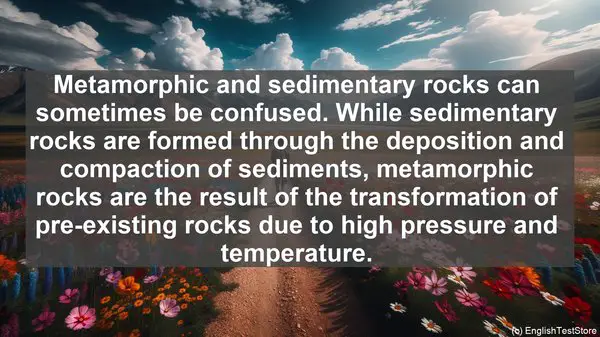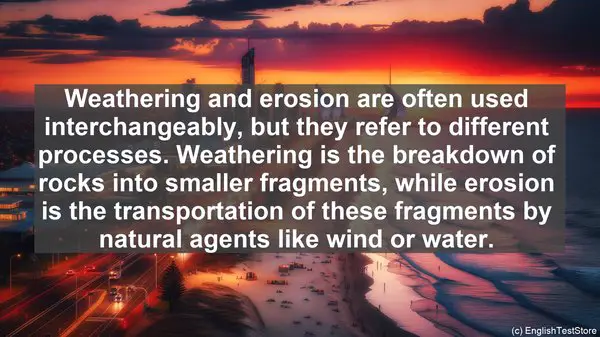Introduction
Welcome to today’s lesson on geochemistry. In this lesson, we’ll be discussing the top 10 commonly confused words in this field. Understanding these terms is crucial for your studies, so let’s dive right in!

1. Mineral vs. Rock
One of the most fundamental distinctions in geochemistry is between minerals and rocks. While minerals are the building blocks of rocks, rocks are composed of various minerals. So, think of minerals as the individual Lego pieces, and rocks as the complete Lego structure.
2. Weathering vs. Erosion
Weathering and erosion are often used interchangeably, but they refer to different processes. Weathering is the breakdown of rocks into smaller fragments, while erosion is the transportation of these fragments by natural agents like wind or water.
3. Igneous vs. Sedimentary
Igneous and sedimentary are two major types of rocks. Igneous rocks form from the solidification of molten material, while sedimentary rocks are created through the accumulation and compaction of sediments. So, if you imagine a lava flow cooling and hardening, that’s how an igneous rock is born.
4. Metamorphic vs. Sedimentary
Metamorphic and sedimentary rocks can sometimes be confused. While sedimentary rocks are formed through the deposition and compaction of sediments, metamorphic rocks are the result of the transformation of pre-existing rocks due to high pressure and temperature.
5. Magma vs. Lava
Magma and lava are both molten materials, but they have different locations. Magma is found beneath the Earth’s surface, while lava is the term used for molten material that reaches the surface during a volcanic eruption.
6. Element vs. Compound
In geochemistry, it’s important to understand the difference between elements and compounds. Elements are substances that cannot be broken down further, while compounds are made up of two or more elements. For example, oxygen is an element, but water is a compound made up of hydrogen and oxygen.
7. Isotope vs. Ion
Isotopes and ions are often confused terms. Isotopes are atoms of the same element with different numbers of neutrons, while ions are atoms or molecules that have gained or lost electrons, resulting in a charge. So, isotopes deal with the nucleus, while ions involve the electron cloud.
8. Volcanic vs. Plutonic
Volcanic and plutonic are terms used to describe the texture of igneous rocks. Volcanic rocks have a fine-grained texture, indicating rapid cooling on the Earth’s surface, while plutonic rocks have a coarse-grained texture, suggesting slow cooling beneath the surface.
9. Cleavage vs. Fracture
When it comes to the breaking of minerals, we have two terms: cleavage and fracture. Cleavage refers to the tendency of a mineral to break along planes of weakness, resulting in smooth, flat surfaces. Fracture, on the other hand, is the irregular, rough breakage of a mineral.
10. Conduction vs. Convection
Conduction and convection are two modes of heat transfer. Conduction is the transfer of heat through direct contact, like a metal rod getting hot when one end is heated. Convection, on the other hand, involves the movement of heated material, such as the circulation of magma in the Earth’s mantle.

